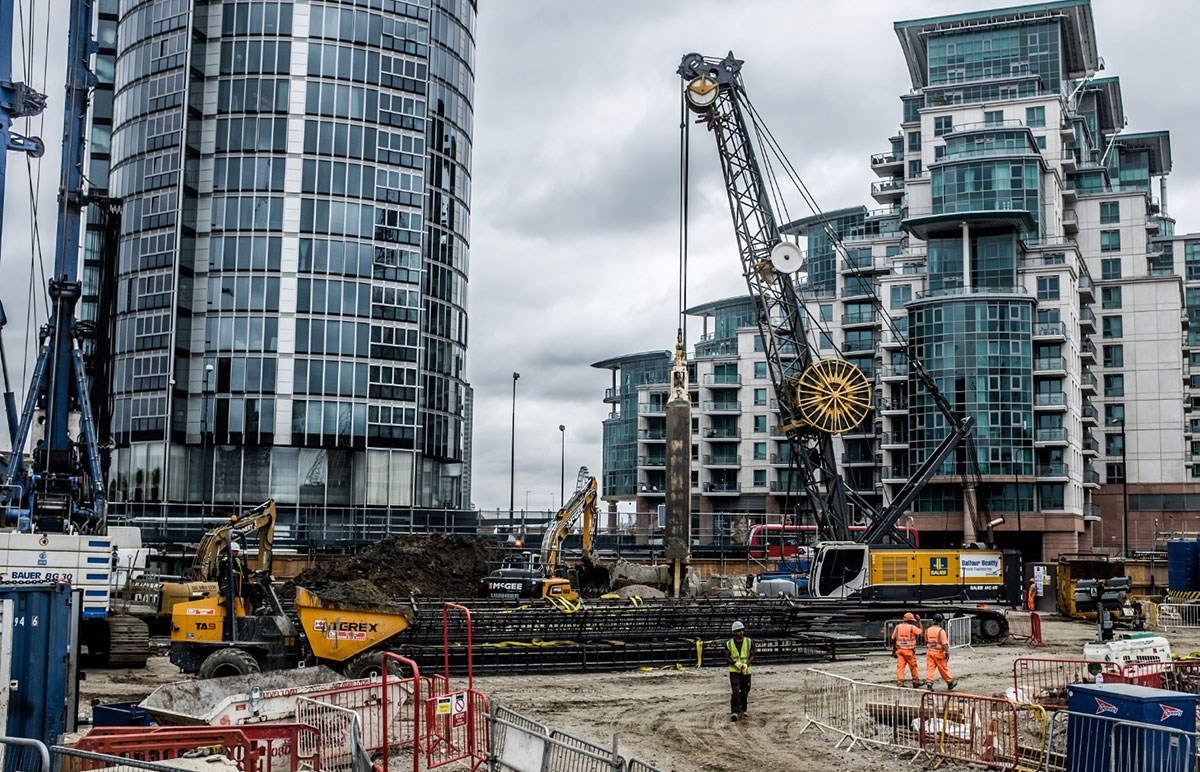Unknown Facts About Geotheta
Unknown Facts About Geotheta
Blog Article
A Biased View of Geotheta
Table of Contents3 Simple Techniques For GeothetaRumored Buzz on Geotheta3 Simple Techniques For GeothetaSome Ideas on Geotheta You Should KnowThe 10-Minute Rule for Geotheta

They conduct website examinations, accumulate samples, carry out lab tests, and evaluate data to review the viability of the ground for construction tasks - Geo Tech Engineer. Based on their searchings for, geotechnical engineers supply recommendations for structure layout, incline security, preserving frameworks, and mitigation of geotechnical hazards. They work together with various other professionals, such as architects, structural engineers, and building groups, to ensure that geotechnical factors to consider are integrated right into the general task layout and application
By assessing the behavior and homes of dirt and rock, they can determine possible geotechnical risks such as landslides, dirt settlement, or slope instability. Their know-how helps stop failures or mishaps that might threaten lives and building. Right here are some detailed tasks and responsibilities of a geotechnical engineer: Site Examination: Geotechnical designers conduct website examinations to collect data on subsurface problems.
They interpret the information to recognize the homes and actions of the soil and rock, including their toughness, leaks in the structure, compaction characteristics, and groundwater problems. Geotechnical Analysis and Style: Geotechnical engineers assess the information gathered throughout site examinations to analyze the security and viability of the site for building jobs. They do geotechnical estimations and modeling to assess aspects such as bearing ability, settlement, slope stability, side earth pressures, and groundwater flow.
The Facts About Geotheta Uncovered
Structure Style: Geotechnical designers play an important duty in developing structures that can safely support the desired framework. They evaluate the dirt problems and tons requirements to figure out the proper structure type, such as superficial structures (e.g., grounds), deep structures (e.g (https://geotheta.weebly.com/)., piles), or specialized techniques like dirt improvement. They think about factors such as negotiation limits, bearing ability, and soil-structure interaction to develop optimum structure layouts
They review building plans, screen website activities, and conduct field assessments to verify that the design referrals are complied with. If unpredicted geotechnical issues arise, they examine the situation and give recommendations for removal or changes to the style. Threat Evaluation and Reduction: Geotechnical designers analyze geotechnical risks and threats connected with the task website, such as landslides, liquefaction, or dirt erosion.

Cooperation and Communication: Geotechnical engineers work closely with various other professionals included in a job, such as architects, structural designers, and building and construction teams. Reliable interaction and collaboration are necessary to integrate geotechnical factors to consider right into the overall project style and construction process. Geotechnical designers supply technological competence, solution questions, and make sure that geotechnical demands are met.
The Buzz on Geotheta
Below are some sorts of geotechnical engineers: Foundation Engineer: Foundation engineers concentrate on designing and evaluating foundations for frameworks. They analyze the dirt problems, load demands, and site characteristics to determine the most suitable foundation type and design, such as shallow foundations, deep structures, or specialized methods like stack structures.
They assess the factors influencing slope security, such as soil homes, groundwater conditions, and incline geometry, and develop approaches to avoid slope failings and minimize dangers. Earthquake Designer: Quake designers concentrate on assessing and developing structures to withstand seismic pressures. They assess the seismic danger of a website, examine soil liquefaction capacity, and establish seismic i was reading this design criteria to ensure the safety and security and resilience of structures during earthquakes.
They carry out area screening, collect samples, and analyze the accumulated information to identify the dirt residential or commercial properties, geologic developments, and groundwater problems at a website. Geotechnical Instrumentation Designer: Geotechnical instrumentation designers focus on tracking and gauging the behavior of dirt, rock, and structures. They set up and maintain instrumentation systems that keep an eye on elements such as dirt negotiation, groundwater degrees, slope motions, and structural displacements to examine efficiency and supply early warnings of possible problems.
The Ultimate Guide To Geotheta
They perform examinations such as triaxial tests, debt consolidation tests, direct shear tests, and permeability tests to gather information for geotechnical evaluation and design. Geosynthetics Designer: Geosynthetics engineers concentrate on the style and application of geosynthetic materials, such as geotextiles, geogrids, and geomembranes. They utilize these products to enhance soil security, strengthen slopes, provide drainage options, and control erosion.
They have a tendency to be investigatory individuals, which implies they're intellectual, reflective, and inquisitive. They are curious, systematic, sensible, analytical, and logical. Some of them are likewise social, indicating they're kind, charitable, cooperative, client, caring, practical, compassionate, tactful, and friendly. Does this seem like you? Take our cost-free profession examination to discover if geotechnical engineer is among your leading occupation matches.
In the office environment, geotechnical designers make use of specialized software devices to perform computations, produce styles, and evaluate data. They prepare records, testimonial task specifications, connect with customers and employee, and coordinate job activities. The workplace setup offers a helpful atmosphere for research, evaluation, and partnership with other professionals associated with the job.
Geotheta - Truths
They often check out task sites to perform website investigations, analyze geotechnical problems, and collect information for analysis. These sees involve taking a trip to different areas, sometimes in remote or tough terrains. Geotechnical engineers may carry out dirt sampling, conduct examinations, and monitor building and construction activities to ensure that the geotechnical aspects of the job are being executed properly.
Geotechnical designers additionally operate in specialized geotechnical labs. In these centers, they carry out experiments, perform tests on soil and rock examples, and analyze the engineering properties of the materials. Geotechnical laboratory engineers function thoroughly in these atmospheres, dealing with testing equipment, operating instruments, and recording data. They work together with other research laboratory personnel to make certain exact and dependable testing results.
Report this page